The 12 types of pollution that affect the environment the most
Pollution is a phenomenon that affects the environment when materials that are not its own are introduced into it. If these materials or substances accumulate to the point of causing damage to the ecosystem, we are talking about environmental pollution.
The polluting materials can be of different types, solid, liquid, gaseous; even energy can be a pollutant. For example, sound is a form of energy; excessive noise can cause serious damage.
Pollution is present all over the planet. There are different types of pollution, apart from air, water and land pollution, as we will see below.
1. Atmospheric pollution
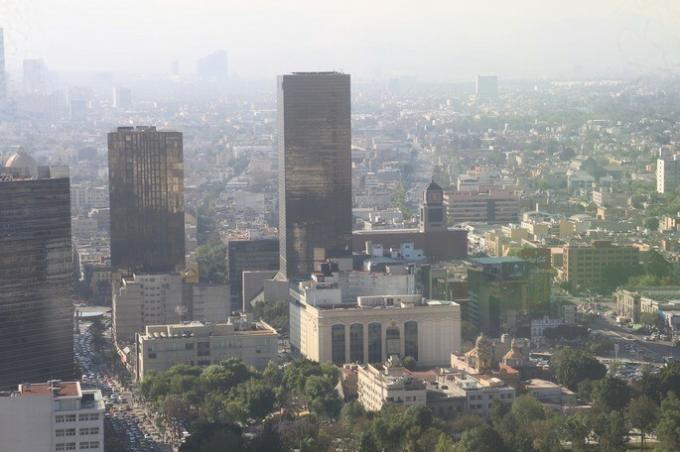
Air pollution is the phenomenon by which particles (solid or liquid) and gases swarm floating in the environment. These particles can be soot, dust, smoke, fumes, and mists.
The main sources of air pollution are fuel-based power plants fossil fuels, chemical industries, refineries, automobile traffic, heating systems and refrigeration.
Air pollution extends beyond the sources of pollutant production. For example, the production of sulfur dioxide and nitrogen oxide in some industrial processes causes acid rain, which affects beyond industrial centers.
Air pollution has effects on several levels:
- The health of human beings: people living near industrial centers or in congested and polluted urban areas have a greater predisposition to diseases, particularly those related to the system respiratory.
- Ozone layer destruction: Compounds known as chlorofluorocarbons or CFCs were used in air conditioners, refrigerators and aerosols, which react with ozone, destroying it. The ozone layer is a protective barrier against UV radiation from space, which causes burns and cancer in humans.
- Global warming: the accumulation of gases such as carbon dioxide and methane retain heat in the atmosphere, increasing the temperature globally. These pollutants are known as "greenhouse gases" because they mimic the way that glass panels retain heat inside a greenhouse.
2. Air pollution in enclosed spaces

Air pollution can also occur indoors, such as restaurants, cafeterias, bedrooms, offices, and workshops. In these indoor environments, the following can accumulate:
- Gases and smoke- The result of using gas for cooking, kerosene-based heaters, and fireplaces.
- Volatile organic compounds: such as cleaning and household products, paints and pesticides.
- Biological contaminants: such as bacteria, viruses, mold, animal dander, dust mites and pollen.
- Cigarette smoke: Contains irritating and carcinogenic compounds.
3. Water contamination
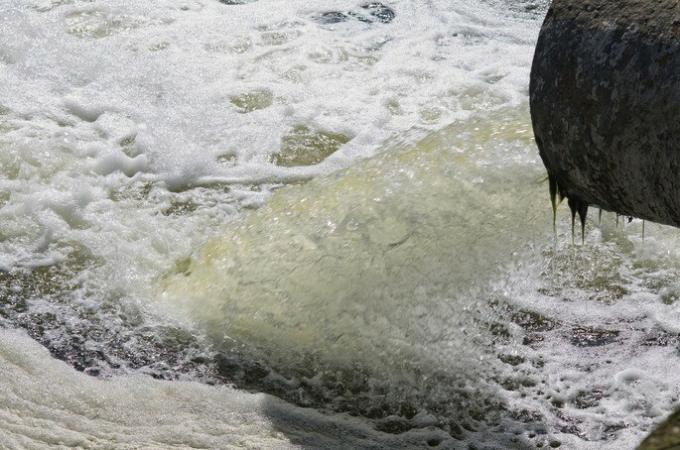
Water pollution is the presence of foreign and harmful materials in the reservoirs and water currents of ecosystems. Clean water is essential for life; Any element that prevents its use safely affects the health of humans, animals and plants.
The main causes of pollution of the waters of rivers and lakes are:
- The industries: that discharge chemicals directly into rivers and streams.
- Agricultural fields: animal waste, fertilizers, pesticides and sediments run off into local watersheds.
- Sewage: they are water contaminated by use in homes and industries and that are discharged into sewers, which eventually drain into rivers and oceans.
- Electric power plants: these discharge hot waters into lakes, harmful to the flora and fauna of the place.
The waters become contaminated with disease-producing organisms, plastics, fertilizers, drugs, salts, metals, sediments, radioactive substances, oil, and heat.
One of the consequences of water pollution is the excessive growth of algae in lakes, a product of nutrients, a phenomenon known as eutrophication.
4. Ocean pollution
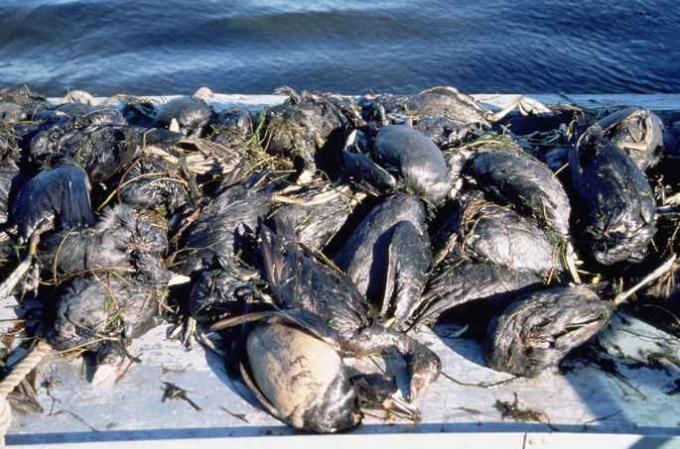
The oceans are not immune to pollution either. The main source of pollutants are oil spills from tanker ships or extraction platforms and pipeline discharges into the sea.
Among the consequences of ocean pollution is the destruction of food for marine organisms with the loss of species and problems in the fishing industry.
One of the most disastrous examples of ocean pollution occurred in 1989 with the oil spill from the tanker. Exxon Valdez in the Gulf of Alaska (USA). This event contaminated more than 2,000 kilometers of the coast of the Alaska Peninsula, the distance from Monterrey to Mérida in Mexico.
5. Pollution of soils
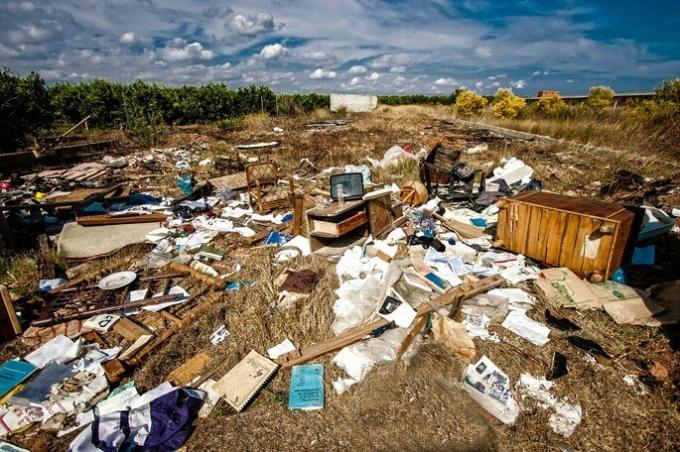 Soil pollution refers to the deposit of objects, materials or substances on the ground as waste. Among these we can mention:
Soil pollution refers to the deposit of objects, materials or substances on the ground as waste. Among these we can mention:
- Municipal solid wasteBetter known as municipal waste, they include non-hazardous waste, biodegradable waste and junk from homes, institutions, commercial establishments and industrial facilities.
- Construction and demolition debris or debris: include objects made of wood and metal, drywall, asphalt, concrete, and other materials.
- Hazardous waste: include dangerous and corrosive substances generated by chemical factories, oil refineries, dry cleaners, machine shops, foundries. These wastes cause immediate harm to individuals or the environment exposed to them.
- Infectious waste: include hypodermic needles and other materials from hospitals or biological research institutes.
6. Technological contamination
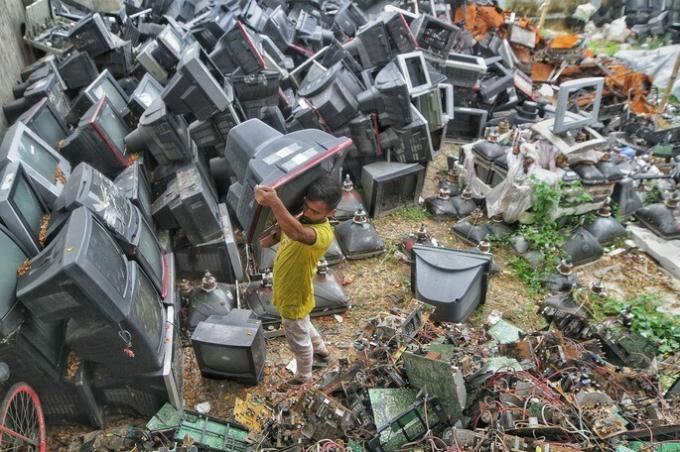
Another growing type of solid waste is electronic waste or technological waste, which includes discarded computer equipment, televisions, telephones and other devices. These equipments present in their composition materials that are toxic, such as cadmium.
By 2019, Mexico generated more tech garbage than Argentina, Colombia, Peru, and Chile combined.
It may interest you to see rural and urban population.
7. Noise pollution
 Noise pollution is unwanted and excessive sound that can have adverse effects on health and environmental quality. Sound volume is measured in decibels dB. The human ear detects from 0 dB to 140 dB (when it starts to hurt). For example, the volume of noise in a library is around 35 dB, inside a subway train it can reach 85 dB and in buildings it reaches 105 dB.
Noise pollution is unwanted and excessive sound that can have adverse effects on health and environmental quality. Sound volume is measured in decibels dB. The human ear detects from 0 dB to 140 dB (when it starts to hurt). For example, the volume of noise in a library is around 35 dB, inside a subway train it can reach 85 dB and in buildings it reaches 105 dB.
People exposed to more than 105 dB are more likely to be deaf. In addition to deafness, excessive noise can increase blood pressure and pulse, cause irritability, anxiety, and mental fatigue, and interfere with sleep, recreation, and communication personal.
In addition, the noise of air and automobile traffic and buildings blocks the sounds of nature. The noise from ship engines, offshore drilling and underwater sonars has adverse effects on marine fauna.
You may also be interested in knowing the difference between sound and noise.
8. Light pollution
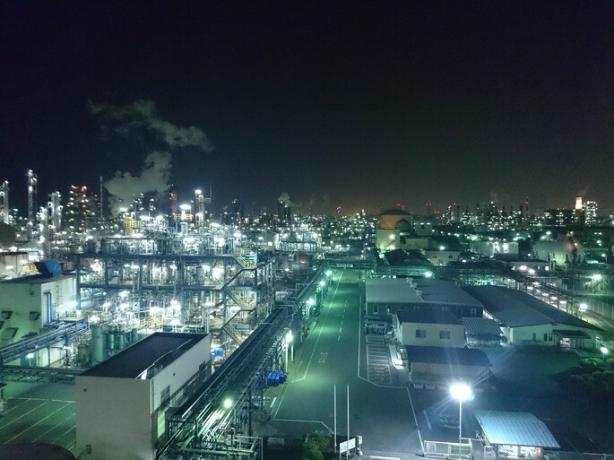 Light pollution refers to the excess of artificial light or the presence of it in unwanted places, such as on the shores of beaches where turtles spawn.
Light pollution refers to the excess of artificial light or the presence of it in unwanted places, such as on the shores of beaches where turtles spawn.
Light pollution is a waste of energy. Since artificial light comes from electricity that is probably generated by the combustion of non-renewable resources, somehow light pollution is related to pollution atmospheric.
Although light pollution seems harmless to public health like water and air pollution, it also has adverse effects on nature.
Artificial lights in urban centers interfere with astronomical observations in addition to disturb animal behavior, such as bird migration and turtle nesting marine.
You may be interested in knowing the types of energy.
9. Radioactive pollution
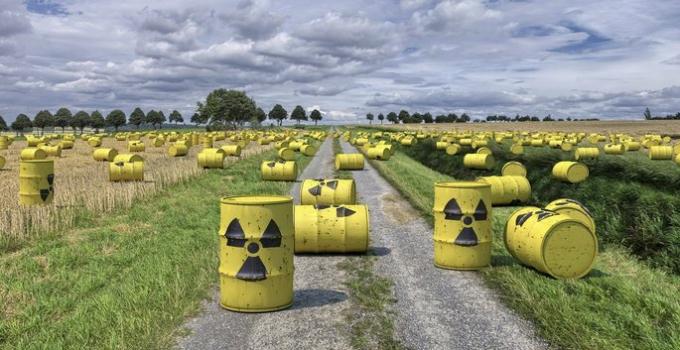 Radioactive contamination is the unsafe disposal of radioactive waste. Radioactive waste emits ionizing energy that can damage living organisms. Because some radioactive materials can persist in the environment for thousands of years until they are degraded, the control of these wastes is of great concern.
Radioactive contamination is the unsafe disposal of radioactive waste. Radioactive waste emits ionizing energy that can damage living organisms. Because some radioactive materials can persist in the environment for thousands of years until they are degraded, the control of these wastes is of great concern.
The development of nuclear weapons and nuclear plants creates a dangerous pollutant that takes thousands of years to disintegrate. Radioactive waste is also generated in hospitals and research centers.
An example of radioactive contamination was what happened in Chernobyl (Ukraine) in 1986. A nuclear reactor exploded, causing death and illness in nearby towns.
10. Plastic pollution
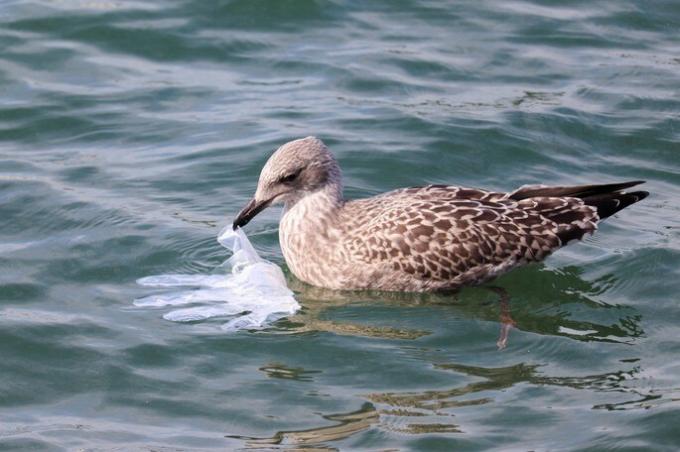 Plastic pollution is the presence of synthetic materials or resins in natural spaces that are not biodegradable, that is, they cannot be degraded by biological processes. There is plastic pollution from Mount Everest to the bottom of the sea.
Plastic pollution is the presence of synthetic materials or resins in natural spaces that are not biodegradable, that is, they cannot be degraded by biological processes. There is plastic pollution from Mount Everest to the bottom of the sea.
It is estimated that 5 million tons of plastic garbage reaches the oceans each year. Solar radiation and sea salt cause plastics to break into small pieces, which facilitates ingestion by animals.
Plastic pollution has the following consequences:
- Death of animalsThey mistake plastics for food they can't digest. In addition, in the seas and oceans, animals can be trapped by nets, dying from being unable to free themselves.
- Endocrine system disorder in humans: some materials used in the manufacture of plastics, such as PoliClorinoes bPhenyl (PCB), bisphenol A (BPA), phthalates, and polybrominated diphenyl ether (PBDE) have been detected in humans and are known to interfere with the endocrine system.
- Alteration of the landscape: plastics are not part of the natural scene and their presence disturbs the functioning of ecosystems.
11. Visual contamination
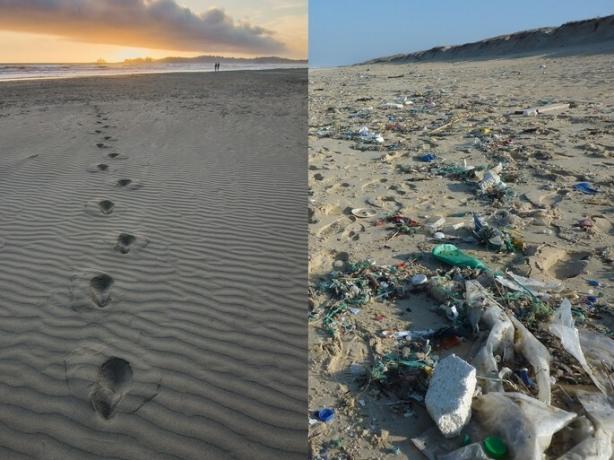 Visual pollution is an aesthetic problem, which refers to the impact of pollution on the ability to enjoy the beauty of a landscape. We generally speak of visual pollution when visibility decreases, that is, not being able to see in the distance due to the effect of smog or haze.
Visual pollution is an aesthetic problem, which refers to the impact of pollution on the ability to enjoy the beauty of a landscape. We generally speak of visual pollution when visibility decreases, that is, not being able to see in the distance due to the effect of smog or haze.
Other examples of visual pollution are garbage that enters natural settings, which gives an unpleasant and ugly appearance to something that under normal conditions is beautiful and relaxing.
12. Space pollution
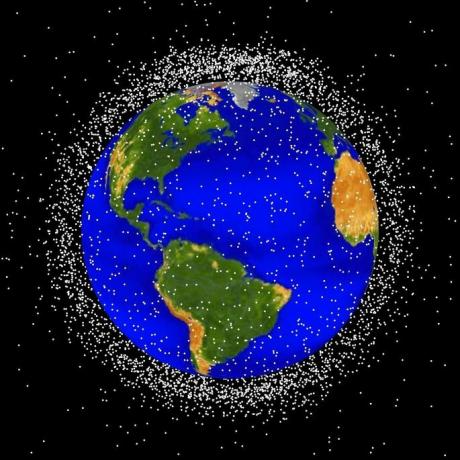
Space pollution or space debris is that product of the accumulation of artificial satellites and their debris sent into outer space from Earth. Humans have been sending satellites into the sky since 1957.
It is estimated that more than 23 thousand pieces of nuts, rocket modules and satellites orbit the Earth.
Causes and consequences of pollution
Causes
- Inadequate disposal of solid urban waste.
- Discharge of pipes without previous treatment.
- Emission of gases from industrial processes into the atmosphere.
- Production of non-biodegradable materials.
- Indiscriminate felling and burning of forests.
Consequences

- Proliferation of disease-transmitting pests.
- Lake volume reduction: by accumulation of organic debris
- Lake eutrophication: excess nutrients in water deposits that stimulate the growth of plankton that prevent the growth of other aquatic species.
- Acid rain: rain with a pH lower than 5.6 resulting from the reaction of sulfur and nitrogenous compounds with water to form sulfuric and nitric acids.
- Greenhouse effect: it is the consequence of excess gases such as carbon dioxide and methane in the atmosphere. This is reflected by an increase in environmental temperature known as global warming.
References
Baldé, C., P., Forti, V., Gray, V., Kuehr, R., Stegmann, P. The global E-waste Monitor- 2017, United Nations University, International Telecommunication Union & International Solid Waste Association, Bonn / Geneva / Vienna.
Curley, R. (editor) (2011). New Thinking About Pollution. Britannica Educational Publishing. New York.
Stapleton, R.M. (editor) (2004) Pollution A to Z. MacMillan Reference USA.


